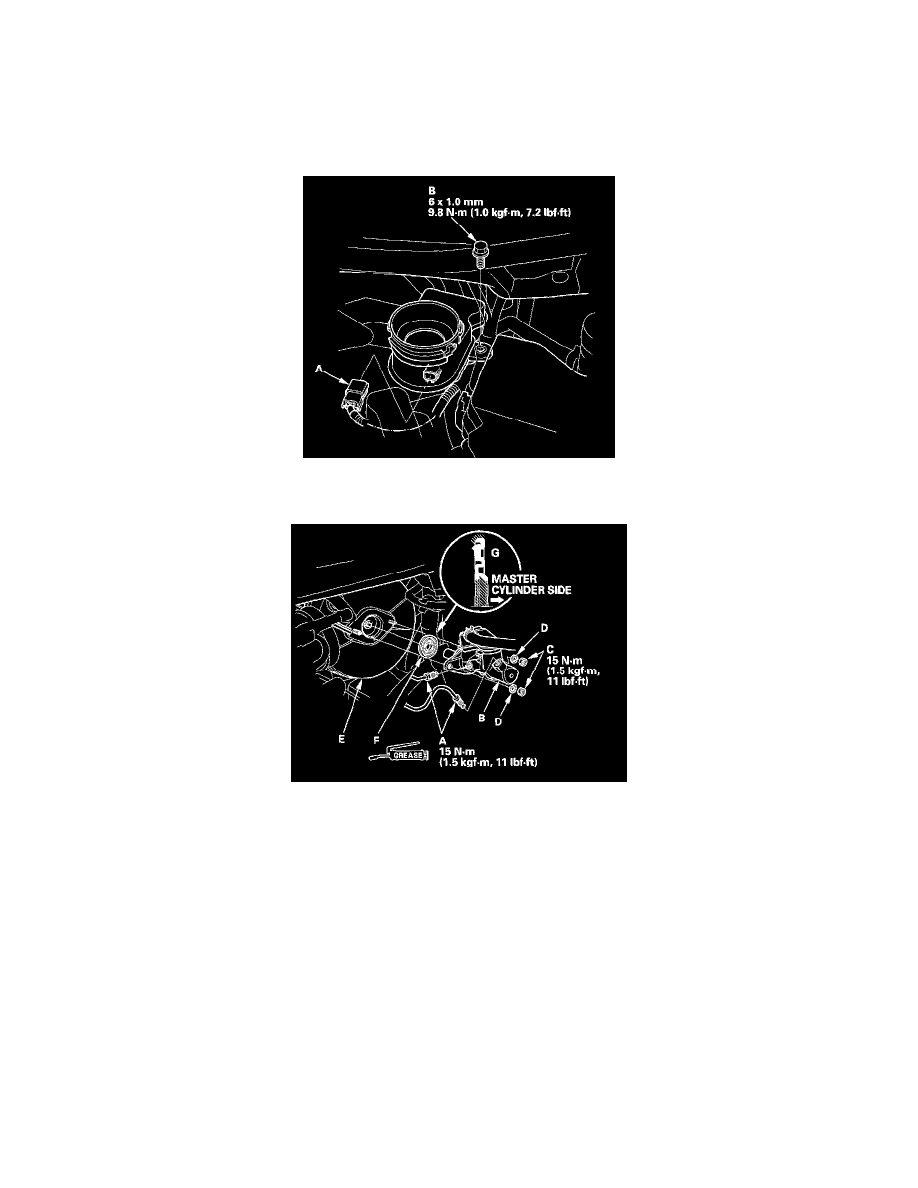Civic L4-1.8L (2006)

Brake Master Cylinder: Service and Repair
Master Cylinder Replacement
NOTICE: Do not spill brake fluid on the vehicle; it may damage the paint; if brake fluid gets on the paint, wash it off immediately with water.
1. Remove the air cleaner.
2. Remove the reservoir cap and brake fluid from the master cylinder reservoir with a syringe.
3. Disconnect the brake fluid level switch connector (A).
4. Remove the reservoir tank mounting bolt (B).
5. Disconnect the brake lines (A) from the master cylinder (B). To prevent spills, cover the hose joints with rags or shop towels.
6. Remove the master cylinder mounting nuts (C) and washers (D).
7. Remove the master cylinder from the brake booster (E). Be careful not to bend or damage the brake lines when removing the master cylinder.
8. Remove the rod seal (F) from the master cylinder.
NOTE: During installation, set the new rod seal onto the master cylinder with its grooved side (G) toward the master cylinder.
9. Install the master cylinder in the reverse order of removal, and note these items:
^
Use a new rod seat on reassembly.
^
Coat the inner bore lip and outer circumference of the new rod seal with the Shin-Etsu silicone grease (P/N 08798-9013).
^
Check the brake pedal height and free play after installing the master cylinder, and adjust if necessary.
10. Bleed the brake system.
11. Spin the wheels to check for brake drag.
